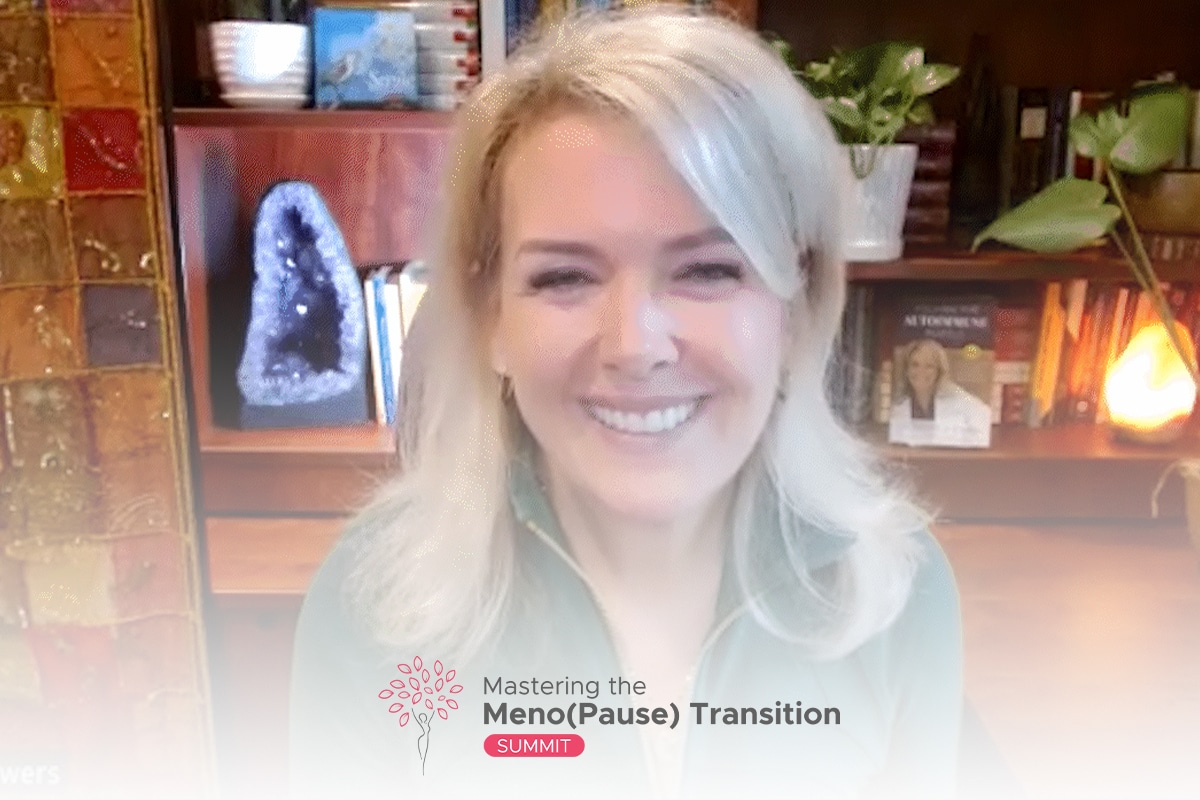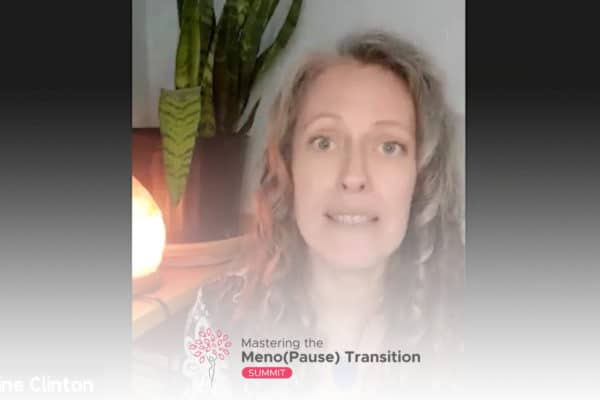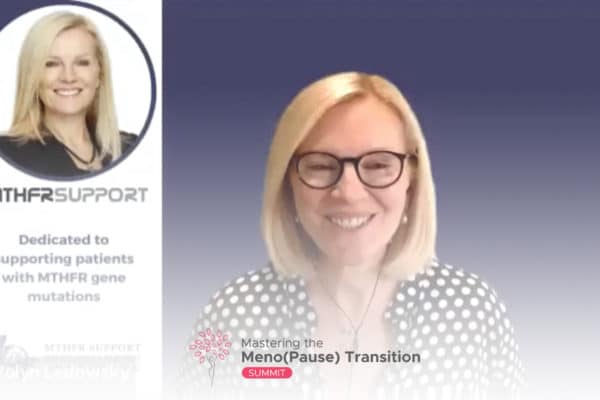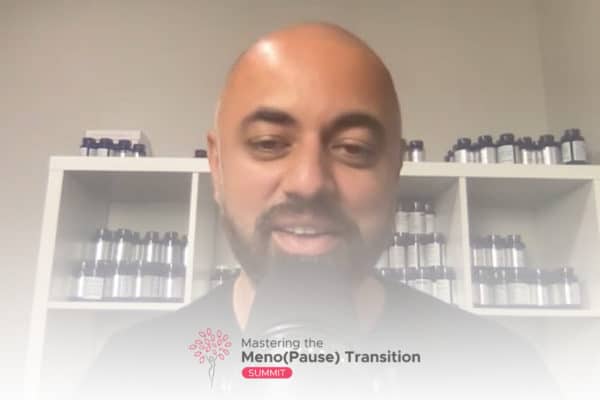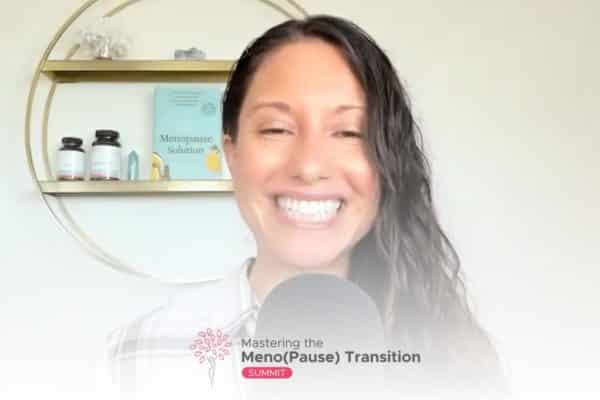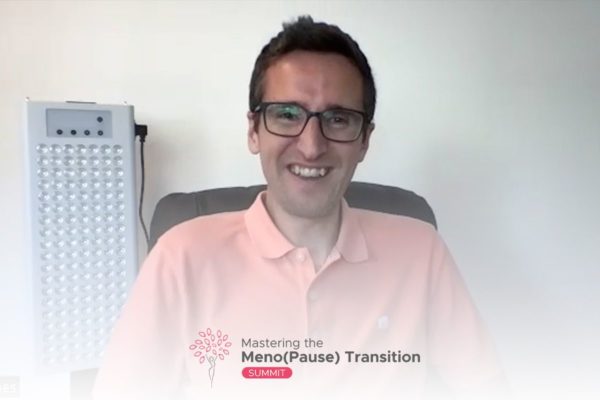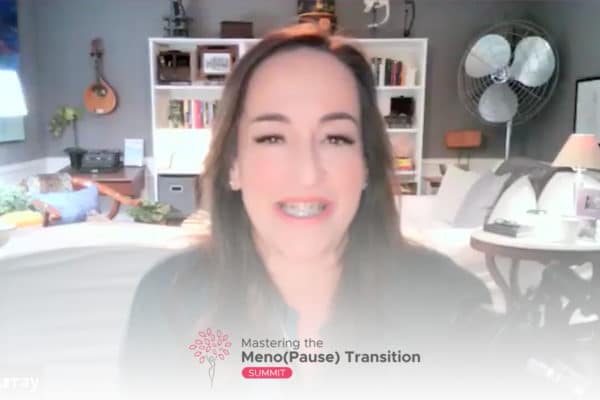Join the discussion below
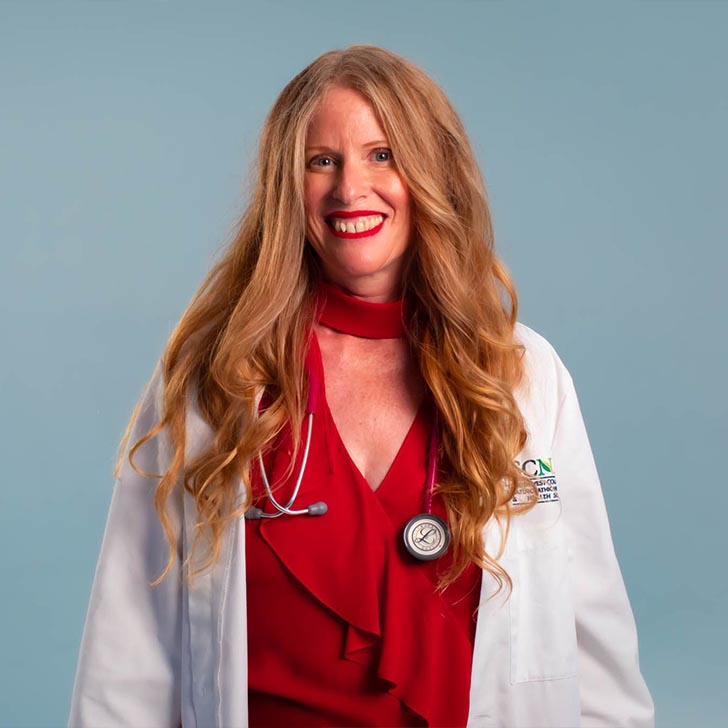
Dr. Sharon Stills, a licensed Naturopathic Medical Doctor with over two decades of dedicated service in transforming women’s health has been a guiding light for perimenopausal and menopausal women, empowering them to reinvent, explore, and rediscover their vitality and zest for life. Her pioneering RED Hot Sexy Meno(pause) Program encapsulates... Read More
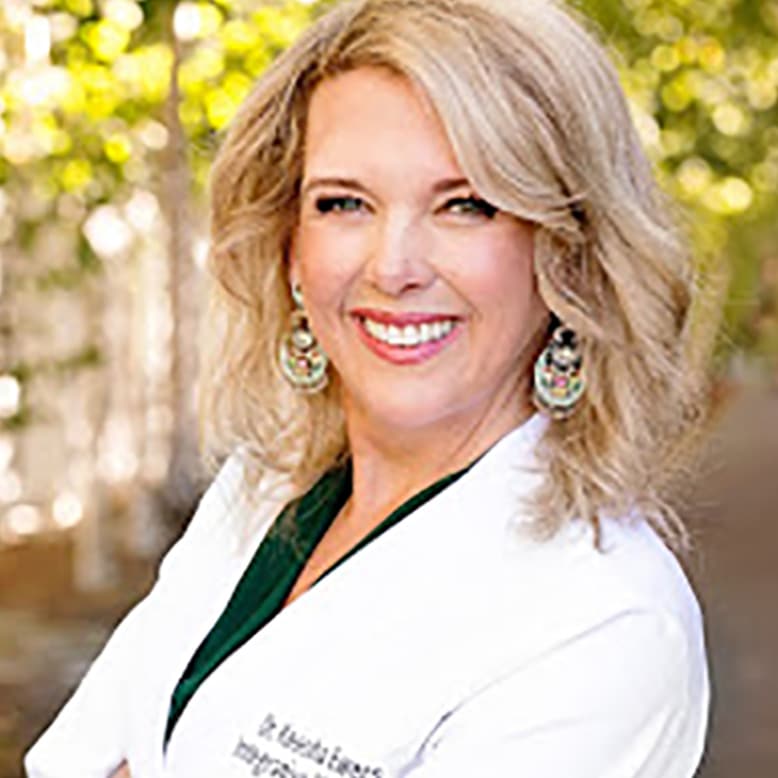
Keesha Ewers, PhD, ARNP-FNP-C, AAP, IFM-C
Dr. Keesha Ewers is an integrative medicine expert, Doctor of Sexology, Family Practice ARNP, Psychotherapist, herbalist, is board certified in functional medicine and Ayurvedic medicine, and is the founder and medical director of the Academy for Integrative Medicine Health Coach Certification Program. Dr. Keesha has been in the medical field... Read More
- Everyone has trauma
- Trauma Impacts Your Hormones And Weight
- Trauma Changes Your Brian Architecture
Related Topics
Adverse Childhood Experiences Study, Autoimmune Disease, Ayurvedic Medicine, Childhood Trauma, Divorce, Domestic Violence, Emotional Abuse, Emotional Health, Functional Medicine, Growth, Healing, Hormones, Incarceration, Integrative Medicine, Meditation, Menopause, Mental Illness, Psychological Abuse, Sexual Abuse, Spiritual Abuse, Substance Abuse, Trauma, Weight, Womens HealthDr. Sharon Stills
Hi, ladies. Welcome back to Mastering the MenoPause Transition Summit. I’m your host, Dr. Sharon Stills. It’s beautiful to see you all here again, and as always, I’ve got a great, great conversation coming up for you. And this is one that I am really, really looking forward to. We’re gonna talk about a important piece of this hormonal journey, which has to do with trauma. And you may think, “I don’t have any trauma,” or you may think, “Oh my God, I have a lot of trauma.” So no matter where you are, where you think you are on the trauma scale, I guarantee there’s gonna be something beautiful here for you to take out, and take home, and take with you, and use on your journey. So this is gonna be one of those grab a blankie, grab your tea, light a candle, get cozy, and get ready to just be part of a really important female conversation. And I’m thrilled to be having this conversation with Dr. Keesha Ewers, who is a integrative medicine expert. And I hope I said your last name correct. Ewers.
Keesha Ewers, PhD, ARNP-FNP-C, AAP, IFM-C
Ewers, yeah.
Dr. Sharon Stills
And I bet it’s Ewers. Is a doctor of sexology, so right away, I knew we needed her here. She’s a family practice ARNP. She’s a psychotherapist, an herbalist. She’s board-certified in functional medicine and Ayurvedic medicine. And she’s the founder and medical director of the Academy for Integrative Medicine Health Coach Certification Program. She has been a popular speaker at Harvard and TEDx. She’s a bestselling author. She is just a wealth of information and you are in for a treat today. So welcome, it is just really, really lovely to have you here.
Keesha Ewers, PhD, ARNP-FNP-C, AAP, IFM-C
Oh, I’m so excited to be here. Thanks for having me.
Dr. Sharon Stills
You are so welcome. So I typically start and just say, tell us who you are, tell us your journey. You have such a diverse and fascinating background of all the things you’ve integrated, that how’d you get there? What was it like?
Keesha Ewers, PhD, ARNP-FNP-C, AAP, IFM-C
Yeah, I mean, all of us in this space have a story about how we get here, right? And definitely, I’m no exception. I started out as a baby nurse at the age of 19 and being kind of gravitating to the high adrenaline junky world in the intensive care unit, Life Flight, and did that for about 10 years. And then, as a lot of my patients say, you know, during my 20s, I ran marathons. I had four children. I used to skydive before I had children. And then, all of a sudden in my early 30s, I woke up one morning sick. And of course it wasn’t all of a sudden, but that’s how it came on, right? And I had gained 10 extra pounds of puffiness. And I had redness over my joints. And it was like someone had taken the batteries out of the Energizer Bunny and I was just flattened. And I got in to see a doctor. And in the course of the history-taking process, she asked me if I had a family history of autoimmune disease.
And I said, “Yeah, I think so. “I think my grandfather who died in his 50s, “I’m 57 now, and he died right at this age, “was in a wheelchair with rheumatoid arthritis, “if I remember the story correctly, “and you know, I never knew him.” And she said, “Well, you have rheumatoid arthritis. “And here are two prescriptions, one’s for methotrexate, one’s for a strong, non-steroidal anti-inflammatory drug. “Come back when you get worse, not if, “and I’ll change your meds.” You know, that same mantra is being said today in rheumatology offices across the United States. And I just remember saying, “Well, hang on, hang on,” ’cause I knew the side effect profile of these drugs. And I said, “Is there anything else? “I’m really disciplined. “I make my own food, I’ll do whatever it takes.” And she said, “No, I’m afraid that you drew “the short straw in the genetic lottery, my dear.” And it was like, close the book, put it on the shelf, that’s it. So I remember as I was driving home thinking, I was born and raised in this style of medicine and this framework, maybe there’s another way. And I always tell my patients and students, like if an herb had bitten me on the bottom, I would not have recognized it. I did not know anything about what I do today. And you know, so I started investigating. I went into PubMed where we keep our medical literature and was looking for, is there something else?
And I found a compelling article on yoga and autoimmune disease, and went to my first yoga class the next day. And in that class, as they are want to do, the yoga instructor, as we’re holding our postures, was wandering through. And he was talking about this framework of medicine that was 10,000 years old from India that’s the sister science of yoga called Ayurveda. And he said enough that it really peaked my interest. And I went home and I looked that up. And I was really stunned because all those years ago, there was this knowledge that we are not all the same and that we even require different diets, and different sleep patterns, and programs, and hydration, like everything, right? Exercise. And we try to do cookbooks in our style of medicine, right? In Western medicine.
And so I thought, “Oh my gosh, “this explains so much,” why if I give Inapsine IV push in the ICU to someone that’s nauseated, they’ll fall asleep, and then, if I give it to another person, they’re wired. It’s like, oh, of course we react differently, right? We’re different people. And so that really opened the space up in my mind, and I went, “Hmm.” And then, in Ayurvedic medicine, autoimmune disease is said to be undigested anger. And when I read that I went, “Oh my gosh, “I’ve never even considered having to digest emotions, “and memories, and feelings, and experiences “the same way I would digest like an apple.” And so I remember sitting back in my chair and going, “I’m not an angry person though, so I don’t know.” And then, it struck me, “Oh, maybe that’s a problem. “Maybe the fact that I consider anger a negative emotion “and don’t really allow it, “maybe that is something I should be investigating.” And so I was learning how to meditate as I was taking yoga instructor training over the next consecutive months. And one day in meditation, this word autoimmune came floating in front of my third eye space.
And I just remember looking at it and going, “Auto, that means I’m attacking myself, “I am committing suicide “in a societally acceptable manner in fact. “When’s the first time I wanted to die?” And just really considering that instead of how fast do I get out of my suffering, it was, what am I meant to learn right now? It was a whole different way of approaching it. And so I started following my memory breadcrumb trail backwards to like, is there a time you ever wanted to die? ‘Cause that certainly isn’t the case now. And sure enough, I landed on this 10-year-old girl version of myself who was being sexually abused by the vice principal of my elementary school. And I remember looking at her and thinking, “Oh, she wanted off the planet.” She really didn’t understand what was going on. My dad was out to sea at the time. I was trying to tell my mom I didn’t wanna go to school. I didn’t feel safe, but I didn’t have the right words for her to understand. I don’t even think I knew the right words.
And I thought, “Oh, that was so confusing and destabilizing, “I wonder if this has anything to do “with what’s going on with my health today.” And I really got that it had to be. And so put myself into a really, like stringent trauma-healing program. And within six months, my RA was gone, and it’s never been back. And so this was such an interesting revelation to me about how we have to digest this stuff, right? And so I went back to school, got my master’s as a nurse practitioner, and then, went to got a master’s in Ayurvedic medicine and functional medicine. And then, I wasn’t in private practice for more than about three seconds before I started realizing, I need to go back and learn how to be a therapist because this idea that this person with gastroesophageal reflux disease in front of me, you know, the gold standard evidence-based practice for my license is that I give them a proton pump inhibitor and don’t even address their anxiety. It’s just not making any sense to me. And so that’s kind of how, I always say every time someone came in and stumped the chump, the chump went back to school. So.
Dr. Sharon Stills
I love that, I love that. We’re very in alignment in how I put patients and how I see healing. And there’s always a little girl, and I’m so sad you had to go through such a horrible experience, but you often say that everyone has trauma. And so not everyone has such an intense sexual abuse, but what do you mean by that, and for the women listening?
Keesha Ewers, PhD, ARNP-FNP-C, AAP, IFM-C
Well, it will probably make people’s skin crawl to hear me say this, when people say, “I’m so sorry you had to go through that,” I mean, I so appreciate that and I say that to other people. And at the same time, had this story not unfolded the way that it had unfolded, I wouldn’t be nearly as empowered, knowledgeable, wise as I am today, right? I mean, it’s the hero’s journey, right? And so this is where you know that you’re healed when you’ve taken the post-traumatic growth out. You’ve learned what it was meant like for, I even, I don’t know. I even think that perhaps my soul designed this as a learning experience for this lifetime. I mean, I don’t know what other people’s spirituality are. But that’s kind of like how I live inside of my own being with that. And so when we talk about this in terms of my story, people will say, “Oh my gosh, I don’t have trauma,” right? But you can think of like sexual abuse, domestic violence, psychological, emotional, spiritual abuse, having a parent or caregiver addicted to drugs or any other substance, mentally ill, incarcerated, gone, you know, dead, divorced. Like these are the big capital T traumas for anyone under 18 years old.
This is how they were listed in the Adverse Childhood Experiences Study. But that was done between 1995 and 1997 by Kaiser Permanente and the Center for Disease Control. Biggest study of its kind, over 3,500 participants. And they were studying capital T trauma and the impact it has on adult life, health, happiness, habit patterns. And we can dig into, you know, going through what all of those findings were, but everyone has lower case T trauma. So I conducted this study in 2013 called the Healing Unresolved Trauma Study. And it was smaller, you know, 100-people pilot study. And what I found is why the ACEs Study came up with the findings that they did. And what I discovered too, was that everybody has had trauma. And I was going through FMRI scans, PET scans, looking at brain imaging, and in studies, how it’s been correlated with post-traumatic stress disorder, what the architectural changes are of the brain. And there are 1,000s of studies that indicate we have a shrinkage in our prefrontal cortex when we undergo capital T trauma, and a growth in the volume of our amygdala and our limbic system, the part that says, “Am I safe, am I gonna be okay?”
And that actually changes the way that our brain brings in information, our memories, store information, how we process and perceive, it’s everything. Now, what I found was that there was a study that was so interesting that had participants take a personal stress inventory. You know, this is the one that says, “Have you been married this year? “Have you been divorced this year? “Has someone close to you died this year? “Have you been given a terminal illness? “Have you moved? “Have you gotten a raise? “Have you gotten fired? “Have you had a child?” Like all of these kind of, there are things that you would usually not call trauma, they’re called stressors. And so then they, after someone filled that out, an FMRI scan of a brain was done. And what was discovered is that people that report themselves as chronically overwhelmed have the same exact brain architectural changes as someone with capital T trauma. And I thought to myself as I looked at this study and looked at the architectural changes on these two, you know, I thought, “Oh my goodness, “I do not have a patient ever that doesn’t report themselves “as chronically overwhelmed.” And I thought that’s so fascinating. And so I started digging into that and sure enough, any experience, we are biologically wired to experience any kind of betrayal, rejection as trauma.
So if you’re put on the outside of the firelight circle in tribal days, then you know the sabertooth tiger can eat you. And so anytime, like one day you’ve got three friends on the playground, and then, the next day, they’ve turned on you, and you don’t know what happened, that’s a trauma, but it’s never gonna be listed as a capital T trauma. If you trip and fall in the lunchroom and the whole cafeteria laughs at you, that’s a trauma, but it’s never gonna be listed on a capital T trauma index. If you miss the spelling word in the spelling bee publicly in front of the whole school or your classroom, then again, it’s gonna be experienced with a trauma. You can’t get to the top of the presidential challenge rope in PE, then you are going to experience that as a trauma, even though it’s never going to be listed as one of those capital T traumas. We have 1,000 of these, 1,000s of them. Childhood is a jungle, you know?
Like walking up and not finding a place to sit in the cafeteria right there. Like who do I sit with? Who are the safe people? Who are the cool kids? Who do I fit in with? Where do I belong? These are all traumatic experiences that are happening hourly in childhood. And so there’s a whole process that happens that I show in the HURT Model about how that gets set up as a patterned survival response inside of your system with an attenuating meaning and belief structure, that then creates adaptive behaviors for the child, which become maladaptive in adulthood. It’s the stuff like, you know, when I have a patient that comes in and says, “I’m good for a while, and then, I’m bad,” right? “I’m on the wagon, and then, I’m off the wagon. “And I don’t know why I self-sabotaged.” It’s because those adaptive behaviors that were put in place to match the beliefs and the meanings that went with a certain feeling that you had when something happened, and then, your nervous system response, all of that gets triggered and it just is done on autopilot. And so if you have a day where you feel like your resilience is really strong and you’re not getting bombarded with a lot of overwhelming energy, then you’re probably going to be in one of what you would call your good days.
But then, when that’s not true, you know, Susie, didn’t get her homework done the day before. Johnny calls and says they forgot his lunch. And like, you name it, whatever it is, the basement floods, then all of a sudden, you’re unable to stay away from these patterned behaviors from childhood. And then at the end of the day, you feel like a failure because you wound up binge watching a whole bunch of Netflix and eating Ben and Jerry’s on the couch, you know? And then, you say, “I need help with my hormones.” That may or may not be true, probably is, but at the root of it, this is an adrenal fight-or-flight response, and it’s triggered by what’s happening here in your perceptions. Not because you just innately have low hormones or adrenal fatigue. It’s all generated by your own thoughts. And so that’s where I start working with people right away, you know, is on what are these patterned survival strategies and how can we track them, and re-pattern them, reframe them, rebuild them so that you’re not in this sort of subconscious, automatic pilot?
Dr. Sharon Stills
This is so important, ladies, I wanna go, there’s two huge pieces that I just wanna reflect upon. One, your response to your own personal trauma and how you used it as a gift. And I always say that, I say it a lot with patients that I’m dealing with who have a cancer diagnosis, but also with autoimmune patients, and even in the menopause journey, it’s always that point when they go, “Doctor Stills, “I am so glad I got this cancer because if I didn’t get it, “I wouldn’t have learned.” And so I think–
Keesha Ewers, PhD, ARNP-FNP-C, AAP, IFM-C
Exactly.
Dr. Sharon Stills
That’s such a beautiful thing you brought up and something really important for the audience to really take in, that our experiences can really be, as painful as they are, they can turn around and be our greatest gifts for growth. And we are here on the planet to learn.
Keesha Ewers, PhD, ARNP-FNP-C, AAP, IFM-C
And we can’t rush that. Like that’s the other thing is if you’re not there right now, please don’t think you’re failing. You don’t get there in a hurry because it’s a digestive process. You have to digest everything, and then, get the nourishment and nutrients out, and get rid of the crap, excrete it. And that it literally is a digestive process that you cannot rush. And so I do wanna say that like, people try and spiritually bypass all of that process, and you can’t do that.
Dr. Sharon Stills
You know, it is definitely a journey. We’ve been talking a lot about the journey and how important it is to mindfully be in that present moment and that who you are is so much more important than what you are doing. It’s who you’re being, and if you rush it, you’ll miss it.
Keesha Ewers, PhD, ARNP-FNP-C, AAP, IFM-C
Yeah.
Dr. Sharon Stills
And so learning to breathe, and relax, and just be open to it, calling it in when it’s ready to appear. And then, I just think what you’re talking about, and our inner child is such a key to healing. And you explained it so eloquently that we all, whether it’s that moment at the lunchroom table or not, that all of these things, and we never know exactly which ones are gonna really hit us big. And even I think back as a parent, I always tease my kids, and they’re older now, they’re in their 30s, but I always tease them, “Therapy’s on me for life.”
Keesha Ewers, PhD, ARNP-FNP-C, AAP, IFM-C
That’s what I always say too.
Dr. Sharon Stills
“I know I was a good mom, I did my best, “but I know that you’re gonna end up in therapy “for something I did, so I got it covered.” And–
Keesha Ewers, PhD, ARNP-FNP-C, AAP, IFM-C
Yeah.
Dr. Sharon Stills
As a grandparent now, I have such a bigger viewpoint of what this little girl, she’s 2 1/2, is going through, and being so conscious, and so mindful knowing that we are creating her inner child right here, right now, and really choosing my words. And even with that knowledge, knowing that there’s still gonna be traumas. And she has a little sister arriving in two months. And I keep teasing, and I say, “Well, here comes the first reason she’s gonna need therapy. “She’s no longer the star of the show. “She’s got a co-star coming “and that’ll–
Keesha Ewers, PhD, ARNP-FNP-C, AAP, IFM-C
Here it come, right there, yeah.
Dr. Sharon Stills
It is such an important piece to highlight, and to learn too. I call my inner child Sheshasha. And she’s named and she’s nurtured. And when I got in touch with her and learned how to heal her, because I had lots of those Ts, big, small, all around, that was the biggest growth in my life, in my healing journey. It was something that even though I had done and been on a healing journey for so long, it was that piece that really just, wow, it moved the ball in a big way. So I think the work you’re doing is just so, so important. And so, so what do you recommend? I mean, we can heal from it. We can heal from the brain and the hormone changes. What do you, what are some of your favorite things to share for the listeners?
Keesha Ewers, PhD, ARNP-FNP-C, AAP, IFM-C
Yeah, I actually, it depends on what’s, I use the HURT Model to help people track their hurt so that they can, we start with where you’re at, right? So if you’re having weight issues because you’re an emotional eater, We start there and we reverse engineer. If you are unhappy in a relationship or having relationship dysfunction and you already know that, “Oh, this started when my parents got divorced “and I was 13,” and then, we start there. So it just sort of depends on where people are at. So I do a lot of deep immersion retreats using plant medicine or not plant medicine. I do three-day ones for non-plant medicine and overnight ones for plant medicine. I do one-on-one therapy with people. I have a book called, “Solving the Autoimmune Puzzle” that has a lot of worksheets and things like that to get started. I just, you know, I also do the functional medicine part because if your adrenals and hormones are off, then it doesn’t matter how much of the emotional work we do, it won’t stick.
So, and then, by the same token, if you’re not doing the emotional work and all you’re trying to doing is taking bioidentical hormones and fixing your adrenals, then that won’t stick. So I have a TED Talk called, “Have you heard from your libido lately?” And I talk about that, like, yeah, you know, you have to not separate the mind and the body from your story, and from your heart, and your spirit, all of it needs to come to the party. And so some of my favorite, one of my favorite things to do is to just start with observing your own language to yourself for 24 hours, just 24 hours. Pay really close attention to the tone you speak to yourself in internally. What you’re saying externally to others, or to yourself if you live alone. And what’s the content of it? And there’s, I don’t know who counts this stuff, but supposedly 94% of our thoughts are recycled. Like we’ve had them already. And so is there a theme to your thoughts? These are automatic negative thoughts. And are you ruminating on a theme? You’ll start to notice that if you start paying attention. This is developing what you would call the observer’s mind. And you’re just starting to witness yourself. Just start with that. On the HURT Model, I have, you know, you have this initial stuff that happens when you’re a kid, but then, in adulthood, the model bifurcates. So over here, an unwillingness to self-confront means you keep at your automatic negative thoughts. You keep ruminating about them. You keep having judgment. You keep doing what you’ve always been doing. And that leads to disease, I mean, it leads to disease. And then, over here–
Dr. Sharon Stills
What’s the Hurt Model?
Keesha Ewers, PhD, ARNP-FNP-C, AAP, IFM-C
That’s the Healing Un-Resolved Trauma study that I did. The HURT Model came out of my research.
Dr. Sharon Stills
Gotcha.
Keesha Ewers, PhD, ARNP-FNP-C, AAP, IFM-C
And then, over here on the other side, there’s another wheel that goes into adaptive memory processing rather than maladaptive. In other words, the child mind is in control over here. Over here, your adult mind starts to have this curious compassion and a willingness to self-confront, and to say, “You know, every time I’m unhappy, I’m present. “I wonder if I have anything to do with this?” You know? “Maybe there’s not just everyone else out here is wrong “and I’m the only one that’s right.” And so you start to be able to have this compassionate self-confrontation. And it goes through steps of how you start to identify your patterns, release them, enter into forgiveness, and then, resentment can drain. I always say resentment is the most toxic element on the planet. It’s not manufactured by industry and poured into our air, water, and soil. It’s actually manufactured internally and ourselves have to bathe in it, and drink it, and get choked by it. And so that’s the worst thing we can do in our own health and with our hormone balance.
And as we go through menopause, it’s a mandate to move from one stage of being a female into another, where you’re supposed to pause. This is the time when you pause and you reflect, and you start witnessing as you’re going across the threshold from, maybe if you’ve been a mom, or a business professional, or both, whatever your stage of life and your middle age has been, you’re moving into elderhood. And as you move across that threshold, it’s time to take stock, it’s time to say, “What’s worked, what hasn’t worked? “Can I consciously create the last chapter of my life “rather than having it be factory default settings “from my childhood that were designed around trauma?” And so as I bond with others in my life, am I trauma bonding or am I bonding from a place of power? You know, you’re a daughter of the stars, you know? Like you’re star seed. And so when you say that out loud and you go, “Yeah, I’m a child of the divine, I’m a star seed.” So then, I bond from power, not trauma. And if I bond from power, that means that I’m bonding from a place where I am bonded with source, with divine, goddess, whatever it is for you.
And you take that into your next stage of life. And that’s not giving the car keys to an upset child and having them drive you through the rest of your life, that’s you showing up as your older, wiser version, and then, emanating that to all who come in contact with you because they need you to be in that place. We don’t need a bunch of arrested development princesses who are all trying to look like they’re 20. We need our elders, our matriarchs, and crones, like, it’s so important. And it’s just like what you’re saying, your granddaughter is so lucky to have you because you’re very intentionally saying, “Okay, this is an inner child right now “that’s being developed. “So how can I best support that process?” Knowing full well that our jobs as parents and other fellow humans is to actually mess up everybody around us, because that’s the only way we attain wisdom is to heal from that, and to learn from it, and to process and digest it, and take the nourishment from it. And so it doesn’t mean if you’re not a perfect, and you can’t be, parent or grandparent, that you failed, it means that you’ve done your job. And so, but doing it as consciously as possible. So that’s, you know, it’s what are your motivations? What are your intentions? Are you doing it consciously? Are you doing it from, like I said, the sort of factory default settings of your childhood trauma?
Dr. Sharon Stills
Hmm, this is the first time we’re meeting. And as you’re talking, I’m going, “She just says exactly what I say, I love it.” It’s like, this is why I wanted to host this summit because you are bringing up the pause, the clearing, this ability to move into this crone state of being in our wisdom. And you say it so eloquently and I love it. And I feel it in my body. And it’s such a, it’s such a beautiful thing to feel this. I’m actualizing, I’m okay with who I am, I’m present. I do not want to go back to being 20.
Keesha Ewers, PhD, ARNP-FNP-C, AAP, IFM-C
No way.
Dr. Sharon Stills
I loved my 40s, now I love my 50s, and it just keeps getting better and better. There’s just–
Keesha Ewers, PhD, ARNP-FNP-C, AAP, IFM-C
I think one of Dante’s rings of Hell should have been middle school. It feels like if I were to design a Hell, it would be middle school, looping that day, after day, after day.
Dr. Sharon Stills
Oh my, yes, no thank you, no thank you.
Keesha Ewers, PhD, ARNP-FNP-C, AAP, IFM-C
I know. Yeah, no, it’s so great. I mean, I told my daughters, “I don’t crave any food anymore. “I don’t crave chocolate. “I don’t have a sweet tooth.” I don’t, you know, after I went through menopause about a year and a half ago, my body is just like one size, I got rid of 2/3 of my closet. I didn’t even realize, after having four children, all these years, I’ve carried three sizes of everything in my closet. And I now have gotten rid of all that. I’m a solid size six, I don’t deviate from that. I don’t crave food. I don’t hold onto, you know, the moodiness that happens with those hormone fluctuations. Like menopause, when you’re doing it consciously, and you’re tracking what all your levels are, including your thoughts, and you’re just really motivated for this as the outcome, is a blessing, I mean, oh my gosh, to not have those mood swings anymore?
Dr. Sharon Stills
Exactly, I’m like, you take your cycle, and it’s a beautiful thing to be a woman and mentor.
Keesha Ewers, PhD, ARNP-FNP-C, AAP, IFM-C
It is, I mean, I loved it while I was there, and I’m so happy to be where I am.
Dr. Sharon Stills
Exactly. I mean, sister, right? I do too, absolutely. It is definitely a blessing, I don’t miss it at all. And I love that you talk about digesting emotions because I practice a lot of Ayurveda too. And that’s such an Ayurvedic way that we have to digest emotions. And emotions, the whole range of them are okay. It’s how do we digest them? How do we dance with our emotions? So I’d love if you just give like a little brief Ayurvedic, we haven’t really talked about Ayurveda and it’s just so beautiful. And I’d love for you to just share a little what it means to you, to the listeners.
Keesha Ewers, PhD, ARNP-FNP-C, AAP, IFM-C
Sure, so Ayurvedic medicine is the science of life. And it’s sort of like the owner’s manual that you wish had been stapled to your baby’s thigh when they came out, you know, it’s like, here’s how, here’s the caring and feeding of this being, which we didn’t get, and also for yourself. And so one of the things that Ayurveda says is, “It’s an elemental framework of medicine,” which means all of the elements that are in the environment are in us. And we are a microcosm of the macrocosm of the larger universe. And so when we think about it in that way, then I always say, “We’re just like dirt,” you know? We have all the stuff that dirt has in it. So with that being said, Ayurveda divides us up into these three types, called doshas. And we are a mixture of all three when we’re born. And those three are called, in Sanskrit, vata, pitta, and kapha. And vata elementally is like sand. And when you take grains of sand and you let ’em go, there’s a lot of air and space, there’s lightness.
It blows away easily because vata people have a lot of air and space in them. And so then, the imbalances of a vata person, which the vata stage of life is menopause and beyond. And so you also have a vata time of day, and you have vata seasons, and cycles throughout life. So when we think about imbalances of vata, it’s going to be all the things old people complain about, dryness, constipation, wrinkling up, you know, the leaf on the tree that now loses all of its luster. That’s going to be a vata mechanism. And so you can get a little air-heady, you know, a little forgetful, and things like pains, and dryness, clicking, popping, cracking bones and joints. All of that brittleness will start to ensue in your system, unless you are actively consciously feeding yourself properly for that, which would mean like a lot of good, healthy fats, and oils, and warm soupy things. You don’t wanna be crunching on ice and putting cold drinks in your body when you’re eating or, you know, you have to keep your digestive fire nice and strong, keep a daily routine that’s nice and steady and stable. So that kind of anchors that vata. If you think about sand, like I said, if you pour oil on the sand, it doesn’t blow away anymore. So that’s how you can kind of think about it. A pitta person, where a vata will be thin with thin lips, thin hair, the tall or short, a pitta person is going to have a lot of ruddy undertones in their skin, perhaps freckles, moles. Yeah. She’s actually a typical, I am too, I’m pitta. I was pitta-vata when I was born. And then, I went through a really big spiritual transformation and I went into pitta-kapha, and my Ayurvedic teacher said that that’s kind of rare. Usually you don’t change your birth constitution. So pitta people are very smart. They have very sharp wit, sharp mind, sharp tongue.
And so then, that can mean that judgment towards self. And then, sometimes it leaks all over everything else can happen. They have sort of a normal body type and everything’s sort of medium. The imbalance of a pitta is going to be red, anything red. So menstrual disorders, inflammation, anything that’s inflammatory in nature can be pitta. And then, so I always say the dirt that represents pitta is like the rainforest soil. If a bird’s flying over the rainforest and drops a seed from its beak, you don’t have to actually cultivate it. That soil’s so fertile, and so rich, and nutrient-dense that it just sprouts. And that’s the way a pitta mind usually works. So they can be inflammatory mentally, spiritually, emotionally, and physically. So then, the last body type is kapha. And that one has, where pitta is more fire and water, kapha is water and earth. And so the soil that kapha would represent is clay. Where sand of a vata is really light and blows away, the clay, you stick a stick in it and it doesn’t move. So it’s immobile, stuck, kind of heavier.
And so it’s a heavier body type. It tends to hold onto puss, or water, or fibroids, and cysts, and boils can be some of the weight gain. Pancreatic problems, blood sugar imbalances, phlegmy, mucusy, these are all kapha imbalances. And so foods that provoke that are going to be bad for kapha. So sugar, and heavy creamy things, and coconut oil. There’s a sort of pervasive idea that in our culture right now in the functional medicine world, that if you just eat healthy fats, it doesn’t matter how many you eat, then you’ll get skinny. That is not true for a kapha, you cannot. It doesn’t matter how healthy your fats are. You can’t be eating fat, that just doesn’t work for a kapha person. Just a tiny little bit, you know, and it’s very minimal for them. So they thrive on bitter greens. Like I just had a smoothie just before this. I taught a course for the Shift Network. And then, I had about 20 minutes before this interview. So I went in and I made a smoothie out of a whole blender-full of bitter greens. And what that does for me is it clears things out, right?
Because the kapha of sitting still, teaching, I can kind of feel my energy collapse in. And so by eating bitters and putting some lemon juice in it with some astringent, it’ll help to kind of perk that back up again. So this is just how I can navigate my own body and know what’s good for it, you know? And so anyway, that’s Ayurveda in a nutshell, and digestive process is king. And so we’re always looking at your tongue, pulse diagnosis, at your skin, at your eyes, at your facial lines, at your bowel movements, your urine, your body odor, all of it to ascertain the language of your body to find its feedback that it’s trying to give us, ’cause it’s always talking to you.
Dr. Sharon Stills
Well, that’s a fantastic Ayurveda 101, and just for the audience listening to realize that we really are individuals, and we have constitutions, and our constitutions can easily get out of balance. And I think that example you gave of the fats is such a great one for kapha people. And you know, some, if you are kapha, you are bigger boned. You are, you know, kapha, my younger son is kapha and I call him my kapha bear.
Keesha Ewers, PhD, ARNP-FNP-C, AAP, IFM-C
I have a daughter I call the same thing. She’s so lovely.
Dr. Sharon Stills
Yeah, he’s just so earthy and grounded, with these big, beautiful eyes. And so there’s beauty in all of our uniqueness and our difference. And Ayurveda so eloquently, and efficiently, and effectively helps you go through that and navigate it. So love it, love it. And okay, now I have to shift gears, doctor of sexology, all right, we are here, we are on this woman’s summit. What is that all about?
Keesha Ewers, PhD, ARNP-FNP-C, AAP, IFM-C
I said earlier that whenever anyone came in and stumped the chump, the chump went back to school, and I was often confronted with people that would come into my office and say, “You prescribed bioidentical hormones “to my mother, or my daughter, or my sister, “my friend, my aunt and they look fabulous, “and I want some of that. “I wanna be on hormones.” And then, I would start asking those very simple questions, like, “So what makes you think you need to be on hormones?” And sometimes it would be things like, “Well, I haven’t had a libido for a long time,” you know? And then, I would ask a follow up question, which is very logical and rational, like, “Do you like your partner?” And often tears, you know, “He had an affair five years ago. “I’ve forgiven him, “but I haven’t wanted to have sex ever since then.” Or, “Gambled away our money. “And we went through with the stock market crash.
“And so I haven’t really wanted to have sex since then.” And I would say, “You know, estrogen, progesterone, “and testosterone aren’t going to fix that. “You know, that’s not what they do.” And I started seeing so many emotional stories, and hurts, and pains that were at the root of this, that I went back to school because nowhere in PubMed was I finding the research that supported what I was seeing. And that’s when I went back and did my doctoral on the HURT: Healing Un-Resolved Trauma Study, and found that, oh yeah, there are five root causes to low libido. And there are two different kinds of libido that I’ve identified. And so I came out and I’m the mother of functional sexology. So I teach doctors this all the time that isn’t… The number one thing that women get if they say, “I don’t have libido” is, first, they’re given a lubricant, which doesn’t make any sense. And secondly, they’re given a serotonin reuptake inhibitor antidepressant drug whose number one side effect is low libido. And so, or often, psychotherapist who has no training and doesn’t know about sexual relating and health.
And so it’s really messy for people, like, who do I talk to? And it’s so funny because when I go to conferences and I teach doctors this, you would be shocked, Sharon, at how many pull me into dark corners and start telling me their sexual stories and how they want me to work with their wives or themselves as a couple. I can’t even believe how many men tell me I need to fix their wives at medical conferences. I’m just like, “First of all, that’s not a thing.” Right? “You’re part of the equation, pal.” So it’s just, it’s so fascinating because when someone says, “Oh, you’re a sexologist, this is your wheelhouse. “I wanna talk to you.” And there’s like a thirst. And when my daughters were teenagers, I was the mom, I actually started doing permission slips because I wanted parents to know this was happening. My kids would have parties where their friends would come over. And sometimes they would keep me up until three o’clock in the morning, ’cause I would do a fishbowl and they could write down any question they wanted and put it in the bowl, and I would take it out and answer it. I mean, they were so hungry for real information, not the information that comes from porn, or chat rooms, or health classes that say you’re gonna get chlamydia and die if you don’t wear a condom. I mean, it’s like, or abstain, you know? And so it’s a real gap for this world.
So sexology for me is the function of not necessarily intercourse, that’s how people kind of go there, is orgasm and intercourse, but more about the relatedness inside of you to yourself and you to others. Libido comes from the Latin word desire, desiderare, which means from the stars, which means that it’s actually your birthright as a female to be able to have pleasure. You have the only body part designed only for pleasure. Men don’t have that. Theirs is dual use, right? And women have a clitoris that’s only for pleasure, that’s it. So the puritanical ethos about desire is bad, or I’m bad if I have it, or I’m bad if I don’t have it. Another piece that came outta my research is that 69% of women after being in a one-year committed relationship no longer have spontaneous sexual desire, and therefore, feel broken. And so to just learn that, you don’t have to feel desire to engage with a safe, intimate partner that you love.
If you know you’ve had fun before with this person and it’s something that you know is healthy for your relationship, then you can actually commit to being aroused first, and have desire follow. And many people don’t know that. They just think they have to be in the mood, which isn’t realistic. Especially if you’re one of the many who always feel overwhelmed. A zebra that’s being chased by a lion knows that if it’s about to get eaten, it’s not safe to reproduce. And so therefore, they’re not gonna have sexual desire. Their hormones that are responsible for having sexual desire and the brain parts that are necessary for desire are co-opted for survival because survival always wins over reproduction. And so sexology for me is untangling, and finding, and fixing your flow to your life force vitality. In Ayurvedic medicine, we call it ojas, I call it O juice. And so wherever that’s blocked, right? And that could be that you have writer’s block and you’re an author. It doesn’t necessarily have to be intercourse. It’s your passion, your desire for life, your vitality.
Dr. Sharon Stills
And your creativity.
Keesha Ewers, PhD, ARNP-FNP-C, AAP, IFM-C
Yeah.
Dr. Sharon Stills
I’m thinking, wow, those fishbowl nights.
Keesha Ewers, PhD, ARNP-FNP-C, AAP, IFM-C
Yeah, right?
Dr. Sharon Stills
How badly did everyone need one of those? We just didn’t get it. And we get our information or lack of information, and then, we’re swimming around, not sure what to do in the fishbowl. So what lucky children and children’s friends. And before we finish, I’d love, you mentioned the five causes of low libido, I’d love for you to just, I’m sure women are like, “Well, what are they, what are they?”
Keesha Ewers, PhD, ARNP-FNP-C, AAP, IFM-C
Oh yeah, they’re the same that are the five root causes for autoimmune disease and cancer, or obesity, or any chronic illness, they’re found in your body, your mind, your heart, your story, and spirit. So in the case of libido, body root causes can be hypothyroid, adrenal fatigue, having cancer or autoimmune disease. Libido is kind of the first thing that goes offline when you’re ill. And it’s the last thing to come back on. And so body, right? Mind, if you’ve got mental constructs that say, because of past trauma, that you’re not safe, or you’re overweight and you don’t think that your partner’s gonna find you attractive, or they’ve even said that, you know? There’s like the traumatic mental belief systems that can go on. Emotional, if you are having any kind of mood issues, like you’re sad, you’re disgusted by sex. Maybe there’s some despair. Maybe there’s some guilt, some shame. These are all going to inhibit libido. In spirit, and then, that can be like good girls don’t. Maybe you wear a purity ring because you were in a Christian Church that said desire is bad, and you need to wait until you get married. And then, you’ve had your hose kinked.
And then, when you get married, you’re supposed to be able to turn it on. And that often doesn’t work. So maybe there’s an Eastern philosophy that espouses that you wanna channel that Shakti and not use it for sex. And there are all kinds of things in spirit realm that can get in the way of libido. And then, story is going to be in your libido map, which is one of the terms I coined, where as you were introduced to sex, did you have trauma, right? And so in your libido map, you can have wounding along different ages and stages that will affect your adult libido. And then, there are two kinds of low libido. One is acquired, which is the woman that comes in and says, “I love my partner, I’ve always loved sex. “We’ve had a great sex life. “I went through menopause, “and now it feels like I have cut glass in my vagina.” That’s a clear acquired low libido due to a very specific reason. And you do an adrenal and hormone test, and you fix that, and off they go. There’s also innate low libido. And that’s when I ask the question, “When’s the last time you had a libido level “that you were happy with?” If they start crying and say, “I never have,” once again, estrogen, testosterone, progesterone are not going to fix that. And the most common reasons for innate low libido are trauma and also things like OCD, anxiety disorders. Yeah, so those are the libido in a nutshell.
Dr. Sharon Stills
Thank you. Well, I’m sad ’cause our time is up and I just wanna chat with you for the rest of my day. We covered so many–
Keesha Ewers, PhD, ARNP-FNP-C, AAP, IFM-C
We did.
Dr. Sharon Stills
Fun realms, just, this is, this is a good one, ladies. You’re gonna wanna listen to this again, and again, because there is so much to digest here. And you’re gonna wanna digest it and really think about where, what really speaks to you, and what’s something you can start working on for your journey. So, wow, do you have a gift you wanna offer to the ladies who wanna learn more about you?
Keesha Ewers, PhD, ARNP-FNP-C, AAP, IFM-C
Yeah, I have what I call a 21-Day Quick Start Program, where you get 21 emails a day at a time dripped in, where they are what I think of as hormone hacks that are in that body, mind, heart, spirit category. So inside of that space, there are really simple, easy things that you can do. I’m one of the busiest people I know, and I’m not overwhelmed by it, I’m grateful for it. I love the work I do. I’m so grateful to live in the era I live in, and to be able to have the blessing, and honor, and privilege of doing what I do. And so I put together things that have worked for me that aren’t tedious and take a lot of time that you can quickly implement and start to see a quick turnaround.
Dr. Sharon Stills
Mm, okay, the summit host can sign up for that too, right? Well, thank you for taking time to be here with us and share your grace, and beauty, and knowledge with all the audience. I know you’re very busy and I appreciate you being here. And from my heart to everyone listening, I just want you to bathe in this conversation. I just feel my whole being lit up from everything we talked about in such important pieces as we journey as women through these hormonal stages. So be well, everyone, and we’ll be back with more soon.
Keesha Ewers, PhD, ARNP-FNP-C, AAP, IFM-C
Bye-bye.
Downloads

